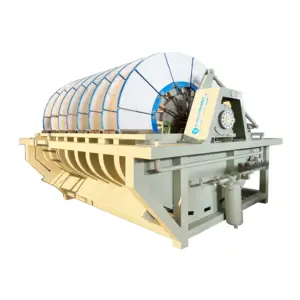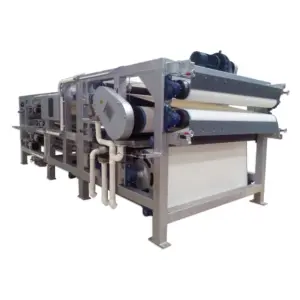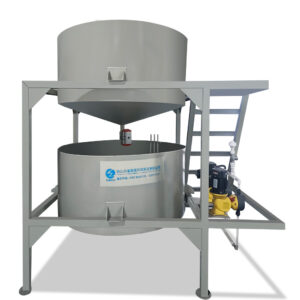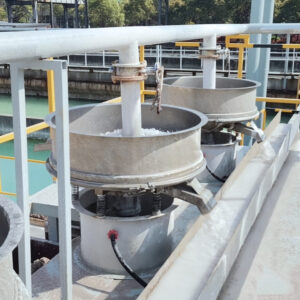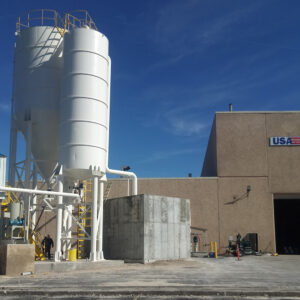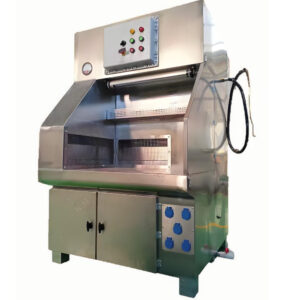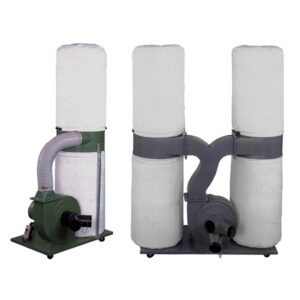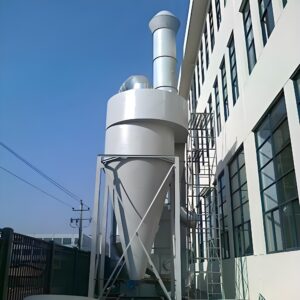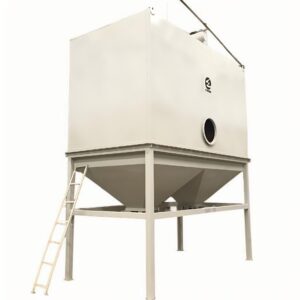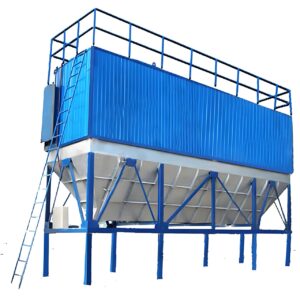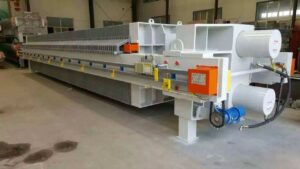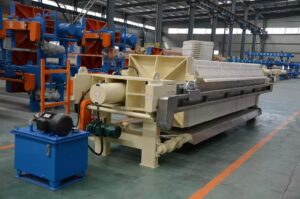L'industria mineraria mondiale tratta oltre 100 miliardi di tonnellate di materiale all'anno, eppure impianti di filtrazione mineraria I guasti sono responsabili fino a 30% dei tempi di inattività non pianificati negli impianti di lavorazione. Questa sconcertante statistica evidenzia una sfida critica che le operazioni minerarie di tutto il mondo devono affrontare quotidianamente. Quando i sistemi di filtrazione si guastano, le conseguenze si ripercuotono su intere operazioni: dalle violazioni della conformità ambientale e dalle multe previste dalle normative alle massicce perdite di produttività che possono costare centinaia di migliaia di dollari al giorno.
Senza un'adeguata infrastruttura di filtrazione, le società minerarie si trovano a dover affrontare una separazione solido-liquido inefficiente, una scarsa qualità del prodotto e una crescente pressione ambientale. La complessità della moderna lavorazione dei minerali richiede soluzioni di filtrazione sofisticate, in grado di gestire le diverse caratteristiche dei minerali, le condizioni operative estreme e le normative ambientali sempre più severe.
Questa guida completa esamina il ruolo essenziale dei sistemi di filtrazione dell'industria mineraria, esplora le tecnologie all'avanguardia e fornisce indicazioni utili per ottimizzare le prestazioni di filtrazione dell'industria pesante. Analizzeremo le applicazioni reali, discuteremo i criteri di selezione e riveleremo le tendenze emergenti che stanno ridisegnando l'efficienza della lavorazione dei minerali. PORVOO Clean Tech è stata all'avanguardia nello sviluppo di soluzioni di filtrazione innovative che affrontano queste sfide critiche del settore.
Cosa sono le apparecchiature di filtrazione mineraria e perché sono fondamentali?
Le apparecchiature di filtrazione mineraria comprendono sistemi specializzati progettati per separare i solidi dai liquidi nelle operazioni di lavorazione dei minerali. Questi sistemi costituiscono la spina dorsale delle moderne strutture minerarie, consentendo un recupero efficiente di minerali preziosi e gestendo al contempo i flussi di rifiuti e le acque di processo.
Funzioni fondamentali nel trattamento dei minerali
La funzione principale della filtrazione mineraria industriale va ben oltre la semplice separazione. Questi sistemi devono raggiungere più obiettivi contemporaneamente: massimizzare i tassi di recupero dei minerali, ridurre il contenuto di umidità nei concentrati e produrre un filtrato chiaro adatto al riciclo delle acque di processo.
Nella nostra esperienza di lavoro con le principali operazioni minerarie, filtrazione per il trattamento dei minerali I sistemi di separazione solido-liquido raggiungono in genere efficienze che vanno da 85% a 99,8%, a seconda dell'applicazione e della tecnologia impiegata. Le filtropresse, ad esempio, possono ridurre il contenuto di umidità nei concentrati minerali fino a 8-12%, migliorando notevolmente la qualità del prodotto e riducendo i costi di trasporto.
I moderni impianti di filtrazione svolgono anche un ruolo cruciale nella conformità ambientale. Secondo dati recenti del settore, i sistemi di filtrazione adeguatamente progettati possono ridurre i solidi sospesi nelle acque di scarico a meno di 10 mg/L, ben al di sotto della maggior parte dei limiti normativi.
Tipi di contaminanti e sfide di lavorazione
Le operazioni minerarie presentano profili di contaminazione diversi che sfidano gli approcci di filtrazione convenzionali. Le particelle ultrafini inferiori a 10 micron, le sospensioni colloidali e le specie chimicamente reattive richiedono strategie di trattamento specializzate.
La distribuzione granulometrica degli impasti minerari varia notevolmente, passando spesso da argille di dimensioni submicroniche a frammenti di roccia di dimensioni millimetriche. Questa complessità richiede approcci di filtrazione multistadio in grado di gestire efficacemente portate e carichi di particelle variabili.
| Tipo di contaminante | Gamma di dimensioni | Metodo di filtrazione tipico |
|---|---|---|
| Solidi grossolani | >100 μm | Filtrazione a schermo |
| Particelle fini | 1-100 μm | Filtrazione a pressione/vuoto |
| Ultrafini | <1 μm | Filtrazione a membrana |
| Metalli disciolti | Ionico | Precipitazione chimica + filtrazione |
Impatto economico dell'efficienza di filtrazione
Gli investimenti in impianti di filtrazione di alta qualità offrono ritorni misurabili grazie a una maggiore efficienza operativa e a una riduzione dei costi di lavorazione. Una tipica operazione di estrazione del rame che lavora 50.000 tonnellate al giorno può risparmiare $2-4 milioni all'anno grazie a prestazioni di filtrazione ottimizzate.
Il recupero dell'acqua rappresenta un altro importante fattore economico. Sistemi efficaci di trattamento delle acque reflue minerarie possono recuperare 85-95% di acqua di processo, riducendo il consumo di acqua dolce e i costi associati. Nelle regioni con scarsità d'acqua, questa capacità di recupero spesso determina la fattibilità del progetto.
Come funzionano i diversi sistemi di filtrazione mineraria?
La comprensione dei principi operativi delle varie tecnologie di filtrazione consente di selezionare con cognizione di causa le apparecchiature e le strategie di ottimizzazione per le specifiche applicazioni minerarie.
Tecnologie di filtrazione a pressione
I sistemi di filtrazione a pressione utilizzano la pressione applicata per forzare il liquido attraverso i mezzi filtranti, lasciando i solidi in superficie. Le filtropresse rappresentano la tecnologia di filtrazione a pressione più comune nelle applicazioni minerarie, in grado di gestire concentrazioni di solidi in ingresso fino a 40% in peso.
Questi sistemi eccellono nelle applicazioni che richiedono la massima efficienza di disidratazione. Le moderne filtropresse a membrana possono raggiungere livelli di umidità della torta fino a 8%, superando in modo significativo le tradizionali presse a camera. Il ciclo di spremitura della membrana applica una pressione supplementare, espellendo l'umidità residua e migliorando la qualità del prodotto finale.
Le filtropresse a camera rimangono popolari per la loro struttura robusta e la capacità di gestire materiali abrasivi. Con una corretta manutenzione, queste unità possono funzionare ininterrottamente per 15-20 anni, offrendo un eccellente valore a lungo termine negli ambienti minerari più esigenti.
Applicazioni di filtrazione a vuoto
La tecnologia di filtrazione sottovuoto crea un differenziale di pressione applicando il vuoto al lato filtrato del mezzo filtrante. I filtri a vuoto a tamburo rotante rappresentano il cavallo di battaglia delle operazioni minerarie continue, in quanto trattano migliaia di tonnellate di fanghi al giorno.
Il vantaggio principale della filtrazione sottovuoto risiede nella capacità di funzionamento continuo e nel consumo energetico relativamente basso rispetto ai sistemi a pressione. Tuttavia, i sistemi a vuoto sono limitati dai vincoli della pressione atmosferica e raggiungono in genere differenziali di pressione massimi di 0,8-0,9 bar.
I sistemi di filtrazione a nastro combinano l'assistenza al vuoto con il trasporto orizzontale del nastro, rendendoli ideali per le applicazioni che richiedono una gestione delicata delle torte di filtrazione fragili. Questi sistemi sono particolarmente efficaci per le applicazioni di preparazione del carbone e di trattamento dei minerali, dove la degradazione del prodotto deve essere ridotta al minimo.
Metodi di filtrazione a membrana e avanzati
Le tecnologie di filtrazione avanzate, tra cui l'ultrafiltrazione e l'osmosi inversa, si stanno affermando nelle applicazioni minerarie che richiedono un filtrato di elevata purezza o il trattamento di flussi di rifiuti difficili. Queste tecnologie eccellono nella rimozione dei contaminanti disciolti e nel raggiungimento di rigorosi standard di qualità degli effluenti.
I filtri a membrana in ceramica offrono una durata eccezionale in ambienti minerari difficili, resistendo a pH estremi e condizioni abrasive che degraderebbero rapidamente le membrane polimeriche. Sebbene i costi iniziali siano più elevati, le membrane ceramiche possono funzionare per 5-10 anni con una manutenzione adeguata, garantendo un'economia a lungo termine superiore.
Quali sono le applicazioni principali della filtrazione nell'industria mineraria?
Le operazioni minerarie utilizzano la tecnologia di filtrazione in più fasi di processo, ognuna delle quali richiede configurazioni di apparecchiature e caratteristiche prestazionali specifiche.
Gestione e disidratazione degli sterili
La disidratazione degli sterili rappresenta una delle applicazioni di filtrazione più critiche nell'industria mineraria moderna. I bacini di decantazione tradizionali sono sottoposti a un crescente controllo normativo e a preoccupazioni ambientali, che spingono all'adozione della tecnologia di filtrazione degli sterili.
L'ispessimento in pasta, combinato con filtri pressa ad alta capacità, può raggiungere un contenuto di umidità degli sterili inferiore a 20%, consentendo l'accatastamento a secco ed eliminando la necessità di depositi permanenti di sterili. Una recente operazione sul rame in Cile ha implementato con successo questo approccio, riducendo il consumo di acqua di 40% e migliorando le prestazioni ambientali.
I vantaggi economici vanno oltre la conformità ambientale. Gli sterili filtrati occupano un volume inferiore di 50-60% rispetto ai fanghi convenzionali, riducendo il fabbisogno di terreno e i costi di chiusura a lungo termine. Per le operazioni su larga scala, questi risparmi possono raggiungere decine di milioni di dollari nel corso della vita della miniera.
| Applicazione | Attrezzatura tipica | Umidità target | Vantaggi principali |
|---|---|---|---|
| Disidratazione degli sterili | Filtro pressa | 15-25% | Accatastamento a secco, recupero dell'acqua |
| Filtrazione dei concentrati | Filtro a vuoto | 8-12% | Qualità del prodotto, costi di trasporto |
| Acqua di processo | Chiarificatore + Filtro | <10 mg/L TSS | Conformità normativa |
Recupero e riciclo dell'acqua di processo
La scarsità d'acqua e la crescente pressione normativa rendono il recupero dell'acqua di processo essenziale per le operazioni minerarie sostenibili. Avanzato impianti di filtrazione possono recuperare 90-95% di acqua di processo, riducendo in modo significativo il fabbisogno di acqua dolce.
Il trattamento multistadio di solito combina coagulazione, chiarificazione e filtrazione di lucidatura per ottenere la qualità dell'acqua richiesta per il riutilizzo del processo. I bioreattori a membrana sono sempre più utilizzati per il trattamento delle acque di miniera contenenti sostanze organiche disciolte dai reagenti di flottazione.
Filtrazione dei concentrati e qualità dei prodotti
La filtrazione finale del concentrato ha un impatto diretto sulla qualità del prodotto e sui costi di spedizione. Riducendo il contenuto di umidità di appena 2-3% si possono ridurre i costi di spedizione di $5-10 per tonnellata per il trasporto a lunga distanza.
La tecnologia di filtrazione iperbarica supera i limiti della disidratazione tradizionale, applicando pressioni fino a 15 bar per ottenere contenuti di umidità bassissimi. Sebbene il consumo energetico sia maggiore, la migliore qualità del prodotto spesso giustifica i costi operativi aggiuntivi, in particolare per i concentrati di alto valore.
Come selezionare i giusti filtri per l'industria pesante per le operazioni minerarie?
La selezione delle apparecchiature richiede un'attenta analisi delle condizioni operative, dei requisiti di prestazione e dell'economia del ciclo di vita per garantire prestazioni ottimali del sistema e un ritorno sull'investimento.
Requisiti di capacità e produttività
Il corretto dimensionamento degli impianti di filtrazione è fondamentale per mantenere gli obiettivi di produzione e ottimizzare i costi di capitale e di esercizio. Le apparecchiature sottodimensionate creano colli di bottiglia, mentre i sistemi sovradimensionati sprecano capitale e risorse operative.
La variabilità della velocità di avanzamento rappresenta una sfida significativa per il dimensionamento delle apparecchiature. Le operazioni minerarie spesso registrano variazioni di ±30% nella produzione giornaliera, il che richiede configurazioni flessibili delle apparecchiature. I progetti di filtropresse modulari consentono di regolare la capacità aggiungendo o rimuovendo le piastre filtranti in base alle richieste di produzione.
Le decisioni sul funzionamento a lotti o continuo hanno un impatto sia sulla scelta delle apparecchiature che sulla progettazione dell'impianto. I sistemi continui offrono un funzionamento stabile, ma richiedono sistemi di automazione e controllo più complessi. I sistemi a batch offrono flessibilità operativa, ma possono richiedere una maggiore capacità di sovralimentazione per mantenere la continuità della produzione a valle.
Compatibilità dei materiali e fattori di durata
Gli ambienti minerari sottopongono le apparecchiature a condizioni estreme, tra cui variazioni di pH da 2 a 12, temperature fino a 80°C e fanghi altamente abrasivi. La selezione dei materiali diventa fondamentale per ottenere una durata accettabile delle apparecchiature e ridurre al minimo i costi di manutenzione.
Leghe e rivestimenti speciali prolungano la durata delle apparecchiature in ambienti aggressivi. Ad esempio, la costruzione in acciaio inossidabile duplex può garantire una durata 2-3 volte superiore rispetto all'acciaio al carbonio in applicazioni acide, nonostante i costi iniziali più elevati.
Secondo gli esperti del settore, la scelta del tessuto filtrante spesso determina le prestazioni di filtrazione più della progettazione dell'apparecchiatura. I tessuti in polipropilene offrono un'eccellente resistenza chimica per la maggior parte delle applicazioni minerarie, mentre le membrane in PTFE garantiscono prestazioni superiori in ambienti altamente aggressivi.
Considerazioni sulla manutenzione e sul funzionamento
L'accessibilità alla manutenzione e la standardizzazione dei componenti hanno un impatto significativo sui costi operativi a lungo termine. Le apparecchiature progettate per un facile accesso alla manutenzione possono ridurre i tempi di manutenzione ordinaria di 50-70%, migliorando l'efficacia complessiva dell'apparecchiatura.
I livelli di automazione richiedono un'attenta considerazione delle condizioni del sito e dei livelli di competenza dell'operatore. Se da un lato i sistemi automatizzati riducono i requisiti di manodopera, dall'altro richiedono una manutenzione più sofisticata e un maggiore magazzino di ricambi. I siti estrattivi remoti spesso preferiscono sistemi manuali più semplici e robusti, nonostante i maggiori requisiti di manodopera.
Quali sfide devono affrontare i sistemi di trattamento delle acque reflue minerarie?
Il trattamento delle acque reflue minerarie presenta sfide uniche che lo distinguono dal trattamento delle acque reflue municipali o industriali, richiedendo approcci e tecnologie specializzate.
Conformità normativa e standard ambientali
Le normative ambientali che regolano gli scarichi minerari continuano a essere più severe a livello globale, con molte giurisdizioni che implementano requisiti di scarico prossimi allo zero. Questi standard richiedono tecnologie di trattamento avanzate in grado di rimuovere i metalli in traccia e di raggiungere criteri di qualità degli effluenti molto severi.
La variabilità dei requisiti normativi nelle diverse giurisdizioni complica la standardizzazione delle apparecchiature. Ciò che funziona in una regione può non soddisfare i requisiti altrove, costringendo le società minerarie a sviluppare strategie di trattamento specifiche per il sito.
Caratteristiche di alimentazione variabili
A differenza delle acque reflue urbane, che presentano caratteristiche relativamente costanti, le acque reflue minerarie variano notevolmente in base al tipo di minerale, ai metodi di lavorazione e ai fattori stagionali. Questa variabilità sfida gli approcci di trattamento convenzionali e richiede sistemi robusti e adattabili.
Le variazioni stagionali delle precipitazioni possono aumentare le portate di 500-1000% durante i periodi di pioggia, richiedendo sistemi di trattamento in grado di gestire variazioni di portata estreme mantenendo la qualità dell'effluente. I bacini di equalizzazione e le configurazioni di trattamento flessibili aiutano a gestire queste sfide, ma con costi operativi e di capitale significativi.
Considerazioni sull'efficacia dei costi e sul ROI
Il trattamento delle acque reflue minerarie rappresenta una spesa operativa significativa che non genera entrate dirette, rendendo l'ottimizzazione dei costi fondamentale per l'economia del progetto. I costi di trattamento variano in genere da $2 a 15 per metro cubo, a seconda della qualità dell'affluente e dei requisiti di scarico.
Tuttavia, considerando il trattamento solo come un centro di costo, si trascurano le potenziali opportunità di recupero del valore. Il recupero dei metalli dai flussi di acque reflue, il riciclo dell'acqua per l'uso dei processi e l'utilizzo dei sottoprodotti possono compensare i costi di trattamento e migliorare l'economia complessiva del progetto.
Quali sono le ultime innovazioni nella filtrazione mineraria industriale?
I progressi tecnologici nella filtrazione mineraria si concentrano sul miglioramento dell'efficienza, sulla riduzione del consumo energetico e sulla possibilità di operare autonomamente in luoghi sempre più remoti.
Sistemi di automazione e monitoraggio intelligente
L'intelligenza artificiale e gli algoritmi di apprendimento automatico stanno rivoluzionando il funzionamento dei sistemi di filtrazione, prevedendo le prestazioni delle apparecchiature, ottimizzando i parametri operativi e consentendo strategie di manutenzione predittiva.
I sensori intelligenti monitorano in tempo reale i principali indicatori di prestazione, tra cui i differenziali di pressione, le portate e gli schemi di formazione delle torte. Questi dati consentono regolazioni automatiche per ottimizzare le prestazioni di filtrazione e prevenire i guasti alle apparecchiature prima che si verifichino.
Le funzionalità di monitoraggio remoto consentono a tecnici esperti di risolvere i problemi e ottimizzare le prestazioni da centri di controllo centralizzati, riducendo la necessità di personale specializzato nei siti minerari remoti. Secondo recenti indagini di settore, questi sistemi possono migliorare la disponibilità delle apparecchiature di 15-25% e ridurre i costi di manutenzione.
Miglioramenti alla progettazione ad alta efficienza energetica
Il consumo di energia rappresenta una parte significativa dei costi operativi della filtrazione, e ciò spinge a sviluppare tecnologie più efficienti. Gli azionamenti a frequenza variabile, i sistemi idraulici ottimizzati e le tecnologie di recupero del calore stanno riducendo il consumo energetico di 20-40% rispetto ai progetti tradizionali.
I progressi della produzione consentono di realizzare prodotti più sofisticati. soluzioni di filtrazione con caratteristiche prestazionali migliorate. Materiali avanzati, produzione di precisione e geometrie ottimizzate contribuiscono a una migliore efficienza di separazione e a una maggiore durata.
Tecnologie di lavorazione sostenibili
Le considerazioni sulla sostenibilità stanno ridisegnando lo sviluppo delle tecnologie di filtrazione mineraria, ponendo l'accento sulla riduzione dell'impatto ambientale, sul miglioramento dell'utilizzo delle risorse e sui principi dell'economia circolare.
I circuiti idrici a circuito chiuso eliminano i requisiti di scarico e massimizzano l'efficienza di utilizzo dell'acqua. Questi sistemi, anche se inizialmente più complessi e costosi, offrono sostenibilità a lungo termine e vantaggi normativi che spesso giustificano l'investimento aggiuntivo.
La transizione dell'industria mineraria verso le fonti di energia rinnovabile influisce anche sulla progettazione dei sistemi di filtrazione. Le installazioni a energia solare ed eolica richiedono capacità di accumulo di energia e di gestione del carico che spesso le apparecchiature convenzionali non hanno, spingendo lo sviluppo di tecnologie di filtrazione ad alta efficienza energetica ottimizzate per l'alimentazione intermittente.
Massimizzare le prestazioni della filtrazione mineraria attraverso una selezione strategica delle apparecchiature
Il futuro delle operazioni minerarie dipende sempre di più da tecnologie di filtrazione sofisticate, in grado di fornire prestazioni superiori e di soddisfare i più severi requisiti ambientali ed economici. Un'implementazione di successo richiede una comprensione approfondita dei requisiti dell'applicazione, un'attenta selezione delle apparecchiature e l'impegno a un'ottimizzazione continua.
I fattori chiave di successo includono il dimensionamento adeguato per le condizioni operative variabili, la selezione di materiali appropriati per gli ambienti di servizio e i livelli di automazione adeguati alle capacità dell'operatore e ai requisiti del sito. I sistemi di filtrazione mineraria più efficaci si integrano perfettamente con le strategie di lavorazione complessive, garantendo al contempo la flessibilità necessaria per soddisfare le mutevoli esigenze operative.
Investimento nella qualità impianti di filtrazione mineraria offre ritorni misurabili attraverso il miglioramento dei tassi di recupero, la riduzione dei costi operativi e una maggiore conformità ambientale. Con l'inasprimento dei requisiti normativi e la crescente scarsità di risorse idriche, le capacità di filtrazione avanzate diventeranno essenziali per le operazioni minerarie sostenibili.
Per le operazioni minerarie che cercano di ottimizzare le prestazioni di filtrazione e di esplorare soluzioni all'avanguardia, la collaborazione con fornitori di apparecchiature esperti consente di accedere a tecnologie collaudate e a competenze applicative. La giusta strategia di filtrazione non solo affronta le sfide operative immediate, ma posiziona le operazioni per un successo a lungo termine in un settore sempre più competitivo e regolamentato.
Quali sono le sfide specifiche di filtrazione che la vostra attività deve affrontare e in che modo le tecnologie di filtrazione avanzate potrebbero migliorare l'efficienza della lavorazione dei minerali e le prestazioni ambientali?
Domande frequenti
Q: Che cos'è l'impianto di filtrazione mineraria e perché è importante nelle applicazioni dell'industria pesante?
R: L'impianto di filtrazione mineraria si riferisce a filtri specializzati progettati per rimuovere i contaminanti dai fluidi e dall'aria utilizzati nelle operazioni minerarie. È fondamentale perché protegge i macchinari pesanti come autocarri, pale e sistemi idraulici dai danni causati da sporcizia, detriti e particolato. I fluidi puliti garantiscono una maggiore durata delle attrezzature, riducono i tempi di fermo e migliorano gli standard di sicurezza negli ambienti minerari più difficili. Queste apparecchiature contribuiscono inoltre a soddisfare le normative ambientali e industriali, controllando la qualità dell'acqua e dell'aria durante l'estrazione e la lavorazione dei minerali.
Q: Quali tipi di impianti di filtrazione mineraria sono comunemente utilizzati nell'industria pesante?
R: I tipi più comuni comprendono:
- Filtri idraulici e del carburante per mantenere puliti e funzionanti i fluidi del motore.
- Sistemi di filtrazione dell'acqua come i filtri a controlavaggio automatico per il trattamento dell'acqua di processo e potabile.
- Filtri HEPA nelle cabine degli operatori per proteggere i lavoratori da polveri e gas di scarico pericolosi.
- Filtri a nastro, a disco e a tamburo utilizzata nel trattamento dei minerali per separare i solidi dai liquidi.
Questi tipi di filtrazione rispondono a esigenze diverse, dalla protezione delle apparecchiature alla salute dei lavoratori e alla conformità ambientale.
Q: In che modo gli impianti di filtrazione mineraria migliorano le prestazioni e la sicurezza dei macchinari per l'estrazione pesante?
R: Mantenendo la purezza dei fluidi e l'aria pulita, le apparecchiature di filtrazione mineraria:
- Impedisce che le particelle abrasive danneggino pompe, motori e componenti idraulici.
- Riduce l'usura delle apparecchiature, prolungandone la durata operativa.
- Riduce al minimo la frequenza di manutenzione e i tempi di inattività non programmati.
- Migliora la sicurezza dei lavoratori filtrando le polveri e i fumi nocivi all'interno delle cabine.
- Garantisce la conformità alle norme di sicurezza mineraria e ambientale, promuovendo condizioni di lavoro più sicure.
Q: Quali sono i progressi della tecnologia di filtrazione mineraria a vantaggio delle applicazioni dell'industria pesante?
R: I moderni impianti di filtrazione mineraria integrano:
- Sistemi di monitoraggio in tempo reale che tengono traccia dei livelli di pulizia e contaminazione dei fluidi.
- Filtri con maggiore capacità di trattenere lo sporco e minori perdite di carico per una maggiore efficienza.
- Filtri a controlavaggio automatico che si puliscono da soli senza interrompere le operazioni.
- Utilizzo di materiali durevoli ed ecologici, in grado di resistere alle difficili condizioni di estrazione.
- Filtrazione HEPA multistadio combinata con carbone attivo per una qualità dell'aria superiore nelle cabine degli operatori.
Q: In che modo la tecnologia di filtrazione HEPA migliora la salute degli operatori negli ambienti minerari?
R: I filtri HEPA catturano particelle microscopiche come la polvere di silice, il particolato diesel e i bioaerosol, che sono collegati a malattie respiratorie come la silicosi e la BPCO. Installati nei sistemi HVAC delle cabine delle attrezzature minerarie, i filtri HEPA:
- Ridurre drasticamente l'esposizione ai contaminanti presenti nell'aria.
- Migliorare la qualità dell'aria per mantenere gli operatori vigili e in salute.
- Aiutare le aziende minerarie a rispettare i rigorosi standard di salute sul lavoro.
Questa tecnologia di filtrazione è essenziale per preservare la salute dei lavoratori a lungo termine nelle applicazioni minerarie dell'industria pesante.
Q: Quali sono i fattori che le aziende minerarie devono considerare quando scelgono un impianto di filtrazione per l'industria pesante?
R: Le considerazioni principali includono:
- Compatibilità con macchinari minerari e tipi di fluidi specifici.
- Efficienza di filtrazione rispetto alle dimensioni e al tipo di contaminanti tipici dell'operazione.
- Requisiti di durata e manutenzione in ambienti minerari difficili.
- Conformità agli standard industriali e alle normative ambientali.
- Disponibilità di funzioni di monitoraggio e automazione in tempo reale per ottimizzare le prestazioni.
La scelta dell'attrezzatura giusta garantisce affidabilità, economicità e sicurezza nei processi di filtrazione mineraria.
Risorse esterne
- Apparecchiature di filtrazione mineraria | Schroeder Industries - Opuscolo dettagliato sulla tecnologia di filtrazione mineraria, con particolare attenzione alla pulizia dei fluidi, ai sistemi idraulici, alla filtrazione dell'acqua e alle apparecchiature di processo progettate per le operazioni minerarie di superficie e sotterranee. Sottolinea le basse perdite di carico, l'elevata capacità di trattenere lo sporco e i dati sulla contaminazione in tempo reale.
- Filtrazione MANN-FILTER per macchine edili e minerarie - Panoramica delle soluzioni di filtrazione a lunga durata per le macchine da miniera e da cantiere, con filtri per il motore, per l'impianto idraulico e per la cabina, progettati per migliorare l'efficienza e la durata delle macchine in condizioni di lavoro gravose.
- Filtrazione delle attrezzature minerarie | Donaldson Engine & Vehicle - Prodotti completi per la filtrazione mineraria per vari veicoli e macchinari minerari, tra cui autocarri, escavatori e attrezzature sotterranee, che si concentrano su prestazioni di filtrazione robuste e affidabili.
- Filtri HEPA industriali per macchine pesanti, miniere e trasporti - Polar Mobility - Spiega il ruolo critico dei filtri HEPA industriali nel proteggere la salute degli operatori, preservare le prestazioni delle apparecchiature e rispettare gli standard di sicurezza filtrando le polveri e i particolati nocivi negli ambienti minerari.
- Apparecchiature di filtrazione mineraria | Filtri Compositech - Informazioni sui sistemi di filtrazione mineraria specializzati, tra cui filtri orizzontali a nastro, a disco e a tamburo, progettati per applicazioni di lavorazione mineraria e metallurgica nell'industria pesante.
- Filtri per miniere e applicazioni per l'industria pesante | MANN-FILTER (Gamma di prodotti dettagliata) - Ampliamento della linea di prodotti MANN-FILTER per le macchine da miniera, compresi i filtri ad alta capacità di trattenere le polveri che supportano in modo efficiente le operazioni delle macchine da miniera dell'industria pesante.
